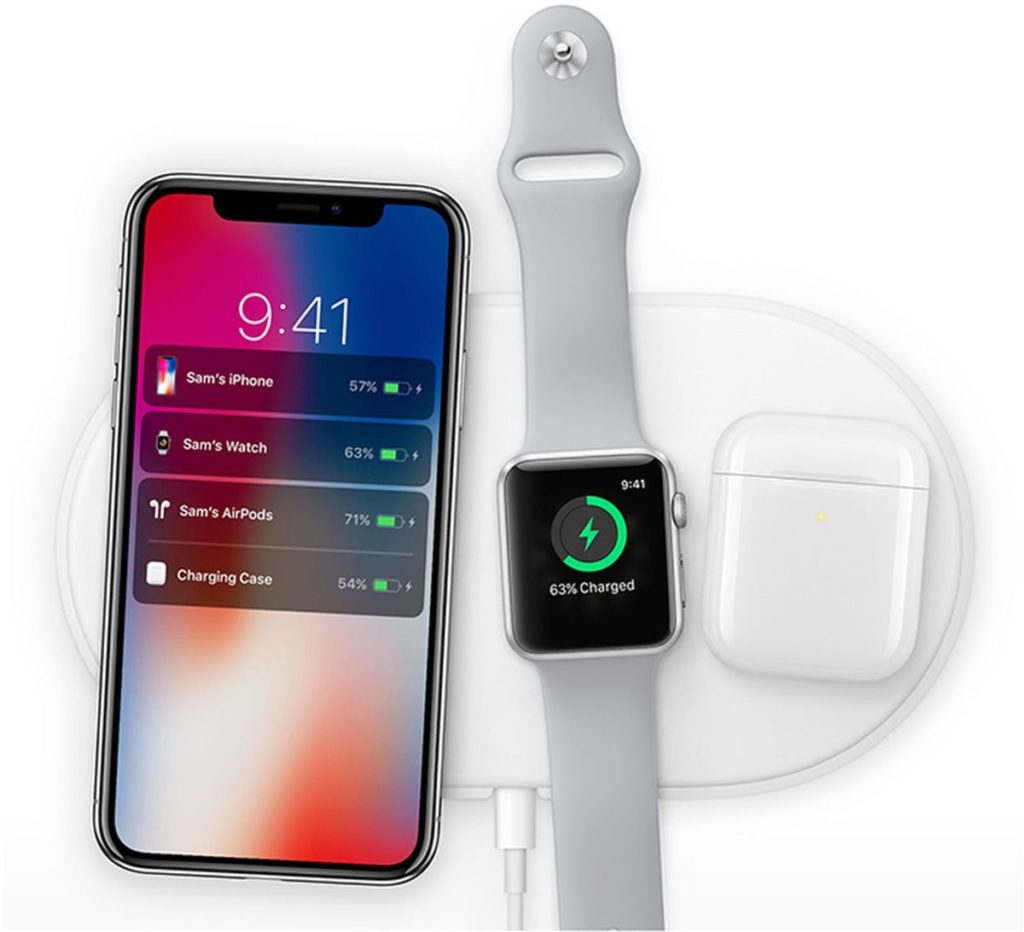Even though Apple’s AirPower is officially canceled, the company still files patents regarding a device that seems very similar such as the newly filed patent (number 20220103013) for a “wireless charging system with temperature sensing.”
About AirPower
But first some background: The AirPower (pictured in an image released by Apple almost four years ago) was originally announced in September 2017 alongside the iPhone X. It was supposed to be able to charge a Qi-compatible iPhone, an Apple Watch, and a pair of AirPods (in a special wireless charging case) at the same time regardless of where they were placed on the pad. However, there was constant rumors of production, engineering, and manufacturing difficulties. Seems those rumors were right, as Apple announced in March 2018 that work on the device was being canceled as, in Apple’s words, “will not achieve our high standards.
About the patent filing
In the patent filing, Apple notes that, in a wireless charging system, a wireless power transmitting device such as a device with a charging surface or magnetic charging cable may wirelessly transmit power to a portable electronic device. The portable electronic device — an iPhone, iPad, Apple Watch, or AirPods — may receive the wirelessly transmitted power and may use this power to charge an internal battery or to power the device.
Apple says that, in some situations, it may be challenging to achieve desired levels of charging efficiency due to the way in which the portable electronic device and wireless power transmitting device are oriented with respect to each other and the configurations used for the wireless charging components in these devices. The company wants to rectify such shortcomings should it ever revive its AirPower concept.
Summary of the patent filing
Here’s Apple’s abstract of the patent filing with technical details: “A wireless power transmitting device may transmit wireless power signals to a wireless power receiving device. The wireless power receiving device may have a housing. A display may be mounted in the housing on a front face of the device. A rear housing wall on a rear face of the device may be provided with a wireless power receiving solenoid. The solenoid may have a linear strip shape that extends along a longitudinal axis.
“The longitudinal axis may extend perpendicularly to a wrist strap coupled to the housing. The wireless power receiving solenoid may have opposing first and second ends. The wireless power transmitting device may have a wireless power transmitting solenoid with opposing first and second ends that are configured to transmit the wireless power signals respectively to the first and second ends of the wireless power receiving device when the wireless power receiving solenoid is within the cradle.”
Article provided with permission from AppleWorld.Today

